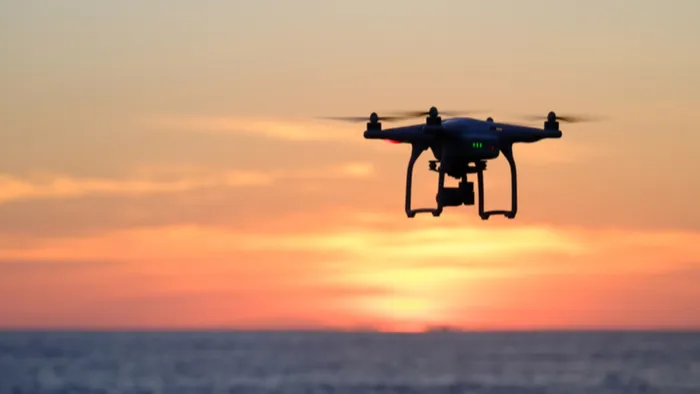Recreational drone fishing has always been illegal... now the law will be better enforced

Drones can drop bait with great accuracy, sometimes right in front of the fish.
Durban - The WILDTRUST, along with several other conservation bodies, has backed the recently published notice of the Department of Forestry, Fisheries and the Environment which makes it clear that the use of drones in recreational fishing is illegal.
“Drone fishing” is using a drone to take bait out and deposit it in a body of water, with the aim of catching fish. Its greatest benefit is that anyone can put bait far out at sea with great accuracy – sometimes even dropping the bait right in front of a fish.
Marine scientist at the trust Dr Jennifer Olbers said the largely negative reaction of the recreational drone fishing community was surprising considering drone fishing has always been illegal, although it had not always been effectively enforced. That was about to change.
Olbers said a key concern around drone fishing was the inability of drone operators to land their catch. “It is our understanding that a large proportion of hooked fish (via drones) are lost. Lost drone fishing tackle leaves (mostly large) sharks and rays with embedded hooks and strong fishing line trailing behind them – a danger to other marine life as well,” she said.
“Furthermore, the extended distances and time it takes fishermen to land large sharks causes the animal to become exhausted and survival rates, even if released back into the water, are low,” she said.
For Olbers the spotlight on drone fishing couldn’t have come at a better time. “The latest International Union for Conservation of Nature Red List assessment report confirms 42% of chondrichthyan species – sharks, rays, skates and chimaeras – in South African waters are threatened (vulnerable, endangered or critically endangered). Of these, 12% are endemic to southern Africa, while 15% are near threatened. Furthermore, two of the 29 species which are listed as endangered are South African endemics, only found in our waters,” she said.
Olbers said a recent study showed that the South African drone catch was dominated by large sharks and rays, including the dusky shark (23%), bronze whaler shark (19%) and butterfly ray (13%). “The study highlights that the capture of endangered dusky sharks, and critically endangered whitespotted wedgefish, which together comprised 35% of the drone catch in South Africa, is most concerning,” she said.
She said South Africa is a global hotspot for shark and ray diversity, with almost 200 species.
“Sharks and rays are slow-growing, late to mature, and depend on critical and essential habitats for various life-history stages, which means they are extremely vulnerable to pressure from fishing and habitat destruction. One of the most effective measures to conserve shark and ray populations is within highly protected areas, especially no-take sanctuary areas,” said Olbers.
The scientist noted that effective management and enforcement linked to ocean protection in South Africa is lacking, but said strides were being taken to adjust regulations and improve enforcement and compliance on the ground.
“Drone fishing is not the only threat to sharks and rays and is definitely not the biggest – but when one takes into account their threatened status, and considering they are key to maintaining the balance of the ocean – we need to start crossing threats off their list one by one,” said Olbers.
The Independent on Saturday
Related Topics: